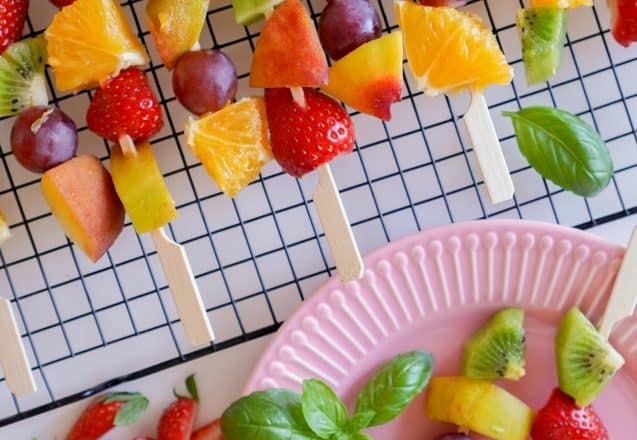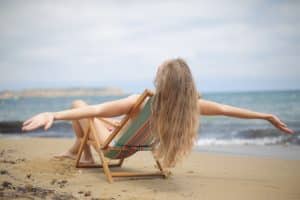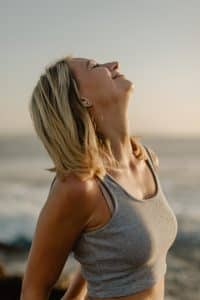Will Exercise Boost My Gut Health?
 If you workout at Habitat Health and Fitness in Lakeland, FL, to get into shape, you'll often find a wonderful side effect. You feel better, too. Exercise can improve your health in a number of ways, including boosting your gut health. What does that mean? Good gut health involves many mechanisms. It's about the peristalsis that moves food through the digestive tract, the health of the gut microbiome and the messaging system between the gut and the brain.
If you workout at Habitat Health and Fitness in Lakeland, FL, to get into shape, you'll often find a wonderful side effect. You feel better, too. Exercise can improve your health in a number of ways, including boosting your gut health. What does that mean? Good gut health involves many mechanisms. It's about the peristalsis that moves food through the digestive tract, the health of the gut microbiome and the messaging system between the gut and the brain.
Exercise can improve how food moves through your digestive system.
When you workout, you increase circulation and blood flow to all parts of the body, including the digestive tract. Sending more oxygen and nutrients helps build healthy new cells and nourish existing ones. The action of the muscles when you workout also helps move food through your system, which can help prevent constipation and improve the symptoms of IBS---irritable bowel syndrome.
Exercise can relieve the symptoms of stress.
When you're under stress, your body goes into the fight or flight response. That causes the body to slow blood flow to areas that aren't necessary for survival at that moment, like digestion, and divert it to areas that are important for survival, like your arms and legs. When you workout, you burn off the hormones of stress, which returns your digestive system back to normal functioning. If it doesn't return to normal functioning, it can cause changes that permanently damage the system.
Exercise increases the beneficial microbes in your digestive tract.
You're never alone. You have trillions of microbes that accompany you every day. Most of them are part of your digestive system and called the gut microbiome with an estimated 300 to 500 different species that include both harmful and beneficial ones. Many gut health issues stem from lack of diversity of the gut microbiome. One way to improve it is with a healthy diet, but the other is through exercise. Exercise can improve that diversity. Studies on athletes show their microbiome is more diverse and other studies show that exercise can improve the microbiome and gut health.
- A healthy gut microbiome affects more than digestion. It is linked to the reduction of conditions such as asthma, cancer, autism, celiac disease, diabetes, malnutrition, MS, heart disease, obesity and eczema.
- A real boost to good gut health, besides exercise, is the elimination of food with added sugar from your diet. Highly processed food that contains little fiber should also be exchanged for whole foods, like fresh fruit and vegetables.
- One study showed that after just exercising for six weeks, the amount of beneficial microbes increased in the gut, which improves everything from mental health to physical issues, like a weak immune system.
- Lack of sleep and stress can affect the health of your gut. When you workout regularly, you not only burn off stress hormones, you sleep more soundly at night and improve your sleep patterns.
For more information, contact us today at Habitat Health and Fitness



 Habitat Health and Fitness in Lakeland, FL provides the opportunity to get fit, but we hope you use that opportunity and engage in active pastimes and hobbies to improve and use your newly gained fitness. People normally nod and agree when I mention hiking, basketball or bike riding, but look a little puzzled or shake their head when I mention yoga. There are
Habitat Health and Fitness in Lakeland, FL provides the opportunity to get fit, but we hope you use that opportunity and engage in active pastimes and hobbies to improve and use your newly gained fitness. People normally nod and agree when I mention hiking, basketball or bike riding, but look a little puzzled or shake their head when I mention yoga. There are
 Man has always been hardwired to love a sweet taste. Some believe it was because most sweet foods are not toxic, and that was the clue to early man it was edible. However, sugar has its negative effects on the body, so many people look for a healthy sugar replacement. What's the healthiest route to take? Give up sugar entirely. Many of the alternatives on the market come with their own set of negatives, like the explosive diarrhea and gas that sugar alcohols can create. You also have to remember that just because it's natural, it doesn't mean it's healthy.
Man has always been hardwired to love a sweet taste. Some believe it was because most sweet foods are not toxic, and that was the clue to early man it was edible. However, sugar has its negative effects on the body, so many people look for a healthy sugar replacement. What's the healthiest route to take? Give up sugar entirely. Many of the alternatives on the market come with their own set of negatives, like the explosive diarrhea and gas that sugar alcohols can create. You also have to remember that just because it's natural, it doesn't mean it's healthy.
 A lot of people avoid eating healthy, because they have a distorted image of exactly what that means. They think it means crunching on carrots, celery and lettuce all day and giving up all other types of delicious food. The thing that surprises them is that healthy food actually tastes good. In fact, once you develop the habit of eating healthy, the food at a fast food place doesn't taste good. You also notice how you feel worse after you eat it.
A lot of people avoid eating healthy, because they have a distorted image of exactly what that means. They think it means crunching on carrots, celery and lettuce all day and giving up all other types of delicious food. The thing that surprises them is that healthy food actually tastes good. In fact, once you develop the habit of eating healthy, the food at a fast food place doesn't taste good. You also notice how you feel worse after you eat it.
 It's pretty hot outside and you might think it's too late to get your body summer ready in Winter Haven, FL, but it's never too late. In fact, after just a month of exercise, you'll notice a difference. There's still three months of summer and summery warm weather in September and October, where you can show off your new body in more revealing warm weather clothing. You'll look fabulous in a swimsuit and even better for the year end holidays.
It's pretty hot outside and you might think it's too late to get your body summer ready in Winter Haven, FL, but it's never too late. In fact, after just a month of exercise, you'll notice a difference. There's still three months of summer and summery warm weather in September and October, where you can show off your new body in more revealing warm weather clothing. You'll look fabulous in a swimsuit and even better for the year end holidays.
 Your attitude and thoughts make a difference in whether you'll be healthy, happy or even successful. That's why we encourage you to think healthy thoughts at Habitat Health and Fitness in Lakeland, Florida. Getting fit is all about eating healthy and exercising regularly. If you hate exercise or worry that you might injure yourself, despite a doctor's okay, you probably won't get the results you want, making it easier to quit entirely.
Your attitude and thoughts make a difference in whether you'll be healthy, happy or even successful. That's why we encourage you to think healthy thoughts at Habitat Health and Fitness in Lakeland, Florida. Getting fit is all about eating healthy and exercising regularly. If you hate exercise or worry that you might injure yourself, despite a doctor's okay, you probably won't get the results you want, making it easier to quit entirely.
 How important is a healthy diet? There are two phrases used in the fitness industry that describe just how important it is. The first is, "You can't out-exercise a bad diet." You need to eat healthy to get the results you want. The second focuses on the importance of diet in your appearance. That phrase is, "A great body starts in the kitchen." If you put junk into your body, you'll end up with junk.
How important is a healthy diet? There are two phrases used in the fitness industry that describe just how important it is. The first is, "You can't out-exercise a bad diet." You need to eat healthy to get the results you want. The second focuses on the importance of diet in your appearance. That phrase is, "A great body starts in the kitchen." If you put junk into your body, you'll end up with junk.
 If you workout at Habitat Health and Fitness in Lakeland, FL, you already know that we create a program that include stretches to do before a workout. The warm up stretches don't require a lot of effort, but they get the blood circulating to the muscles to prepare for the extra effort required during the workout, get your heart ready for the workout and increase the temperature of the body to make the muscles looser. The stretches use the same muscles you'll be working during your actual workout.
If you workout at Habitat Health and Fitness in Lakeland, FL, you already know that we create a program that include stretches to do before a workout. The warm up stretches don't require a lot of effort, but they get the blood circulating to the muscles to prepare for the extra effort required during the workout, get your heart ready for the workout and increase the temperature of the body to make the muscles looser. The stretches use the same muscles you'll be working during your actual workout.
 You may have read about all the benefits of having a workout partner but are still unclear whether it's the right move for you. While there are a lot of good reasons to have one, it's not for everyone. There are some reasons not to have one. Here are the pros and cons of a workout partner so you can decide whether having one is right for you.
You may have read about all the benefits of having a workout partner but are still unclear whether it's the right move for you. While there are a lot of good reasons to have one, it's not for everyone. There are some reasons not to have one. Here are the pros and cons of a workout partner so you can decide whether having one is right for you.
 Not all processed foods are bad. Some of it is healthy. The actual food and how it's processed makes a difference in how it will affect your health. For instance, frozen vegetables are processed. They're washed, which is a way of processing. They normally are frozen close to the field, so there's no transportation. That means they can fully ripen and immediately washed and frozen they're frozen. If they're vegetables, they are also blanched before freezing. The process of freezing them quickly after they ripen means they probably have more nutrients than fresh fruits and vegetables on the store shelf.
Not all processed foods are bad. Some of it is healthy. The actual food and how it's processed makes a difference in how it will affect your health. For instance, frozen vegetables are processed. They're washed, which is a way of processing. They normally are frozen close to the field, so there's no transportation. That means they can fully ripen and immediately washed and frozen they're frozen. If they're vegetables, they are also blanched before freezing. The process of freezing them quickly after they ripen means they probably have more nutrients than fresh fruits and vegetables on the store shelf.